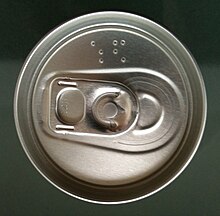
Back بريل يابانية Arabic Braille xaponés AST Braille japonès Catalan Japanische Brailleschrift German Japana brajlo Esperanto Braille japonés Spanish Braille japonais French 일본어 점자 Korean Japans braille Dutch Japonca Braille Turkish
| Japanese Braille ⠇⠮⠴⠐⠪⠎⠀⠟⠴⠐⠳ | |
|---|---|
| Script type | |
Print basis | Kana |
| Languages | Japanese |
| Related scripts | |
Parent systems | Night writing
|
Child systems | Two-Cell Chinese Braille (in conception) kantenji |

Japanese Braille is the braille script of the Japanese language. It is based on the original braille script, though the connection is tenuous. In Japanese it is known as tenji (点字), literally "dot characters". It transcribes Japanese more or less as it would be written in the hiragana or katakana syllabaries, without any provision for writing kanji.
Japanese Braille is a vowel-based abugida. That is, the glyphs are syllabic, but unlike kana they contain separate symbols for consonant and vowel, and the vowel takes primacy. The vowels are written in the upper left corner (dots 1, 2, 4) and may be used alone. The consonants are written in the lower right corner (dots 3, 5, 6) and cannot occur alone.[1] However, the semivowel y is indicated by dot 4, one of the vowel dots, and the vowel combination is dropped to the bottom of the cell. When this dot is written in isolation, it indicates that the following syllable has a medial y, as in mya. Syllables beginning with w are indicated by dropping the vowel dots to the bottom of the cell without additional consonant dots.[2]